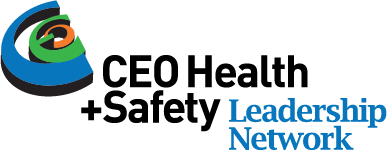Growing vaccination rates are enabling the world to get back on track and people to be with people again. A weight is lifting, but we're not out of the woods yet. COVID is not going anywhere fast.
Even with vaccines readily available, the flu kills thousands each year, but society does not stop because of it. Just as we have learned to accept flu as a norm, we can expect to do the same with COVID as it shifts from being a pandemic to being endemic to our way of living. We will continue to see COVID cases among those who refuse vaccines, and as efficacy wanes and boosters become necessary for those who are already fully vaccinated.
What does this mean for leaders?
For all the tragedy COVID brought upon us, it also delivered some unforeseen opportunities. Many individuals gained a greater appreciation for managing their physical and mental health, and organizations did the same. Some had to respond quickly to survive, and others used the opportunity of repeated lockdowns to reset their priorities.
The 2021 Health & Safety Leadership Survey revealed that the pandemic elevated the importance of health and safety in 86% of respondent workplaces. And, 85% said that, going forward, health and safety will be more important than it was prior to the pandemic.
No matter how your organization came to embrace new health and safety standards, you've established an important baseline, and the challenge will be to support employees' growing optimism in balance with continued vigilance.
Tips for leading in the endemic COVID era
Safety will be an even more important consideration in the design and organization of work. Research conducted by Steelcase found that there are five critical needs that will change the employee experience as we move out of the pandemic.
- Safety
- Belonging
- Productivity
- Comfort
- Control
Their research also revealed that “87% of leaders around the world say they expect they will allow more flexibility about where, when and how people work — a 38% increase from April 2020. More companies in more countries are allowing for the increase of flexible work policies.”
Showing up for work is no longer about putting in the time and being physically present in the workplace. It is about working together to achieve objectives, and some have discovered that many employees are more "present" when they work from home than they ever were in the office.
The need to move swiftly and synchronize efforts was challenging, but it also galvanized teams. We don't want to lose this as we start to feel the severity of COVID lift. The key will be to maintain the same levels of collaboration and communication and engage employees in planning and decision-making around work design.
On top of helping them feel safe, secure, and engaged, creating a responsive and flexible work environment will give employers a much-needed edge in competing for and retaining employees as we face a global talent shortage.
What is your mindset?
As most have learned over the past year and a half, it is essential to be open to differing views and comfort levels.
Recognize you have your own biases and beliefs and that they have an impact on your interactions with employees. If you haven't already, think about whether you're applying psychologically safe practices to make people feel valued, respected, supported and included.
For example, two leaders in the same company with different peer groups inside and outside work can have completely different mindsets regarding COVID. One may not have any concerns, and the other may worry they will become infected by people who refuse to take a vaccine.
In the same vein, some employees will be chomping at the bit to return to the office. Others may not feel so comfortable and may favour working remotely. As leaders, we need to find a way to respect these viewpoints and work with employees to figure out how they can feel connected in either scenario.
Psychological safety practices reduce fear, encourage honesty and transparency, and assure employees that they are being heard and not judged. They make room for open and honest dialogue.
Nurture psychologically safe leadership in your organization
Adapting to COVID as an endemic disease will require constant learning. Developing competency in psychological safety at a leadership level will be particularly important.
Nothing is more powerful for adult learning than practical experience. Team coaching is effective for helping leaders develop practical knowledge and skills they need to become psychologically safe leaders. Discussing problems and working with a coach and peers will help create practical solutions that your leadership team members can apply in their day-to-day interactions. And when they feel safe to share their experiences - good and bad - with others, they will transfer vital knowledge to help you sustain a healthy workplace.
If all the leaders don't share this mindset in your organization, employees won't feel supported. We are motivated by pain (desire to stop things that hurt) and pleasure (desire to continue the things that bring joy). Employees who do not feel supported or heard will ease this pain by looking for other sources of encouragement, which could include seeking employment elsewhere.
What are we thinking now?
It is important to recognize that even as our situation improves, COVID will continue to present challenges.
A simple question like this can lead to a rich exchange. Employees hear what you are thinking about COVID, and, in turn, you gain insight and have the opportunity to address any concerns they bring forward.
For the past year, leaders have been learning how to adapt and support employees through an uncertain time. We've all longed for, and some have promoted, the hope that COVID will pass and things will return to normal. However, it is becoming apparent that we won't ever return to what was, and a new normal is emerging.
We don't know yet what this will look like in the workplace. However, being mindful of attitudes and behaviours, maintaining collaboration, communication, and connectedness, and helping other leaders develop psychologically safe behaviours, will make it easier for your team to move through this next phase of recovery.
Get to know the authors – Dr. Bill Howatt and Louise Bradley

 Dr. Bill Howatt and Louise Bradley
Dr. Bill Howatt and Louise Bradley



